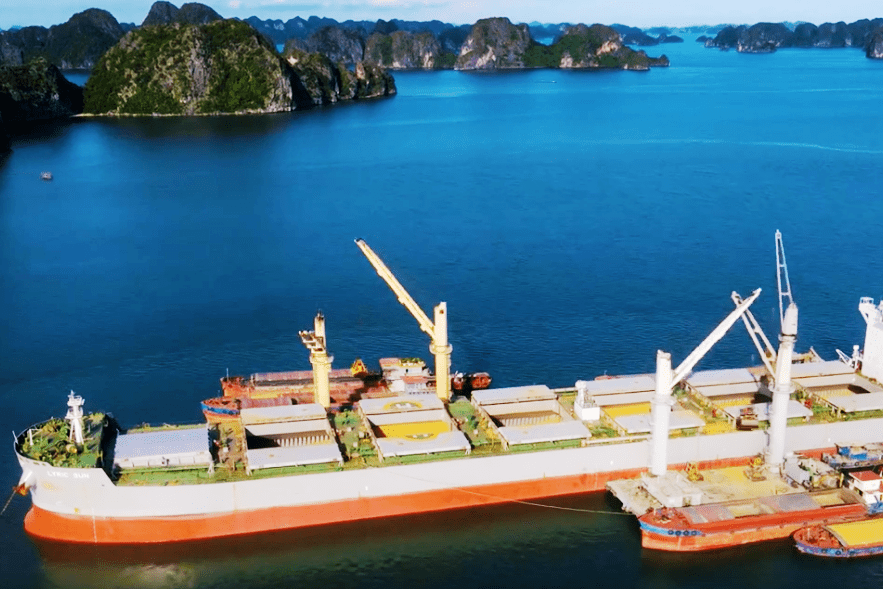
Lyric Sun carried 74,000t of wheat from GrainCorp’s Port Kembla terminal to Ha Long Bay in Vietnam, where it discharged on to barges in September 2021. Image: Minh Long Maritime Services
THE AUSTRALIAN Parliament’s Agriculture Committee has launched an inquiry into the role of Australian agriculture in South-east Asian markets.
The inquiry will focus on how Australian agriculture can support Southeast Asia’s food security, improving market access and trade systems, and building capability in the region to improve agricultural sustainability, technology and innovation.
The committee is also interested in identifying new mechanisms and emerging opportunities and challenges for Australian agriculture to address key priorities in the Southeast Asia region.
Committee chair Meryl Swanson said the Australian Government has prioritised a deepening engagement with Southeast Asia, and noted from the recently released Invested: Australia’s Southeast Asia Economic Strategy to 2040 that Southeast Asia is at the centre of global growth and is a development and economic success story.
“Agriculture plays a critical role in sustaining the region’s economic growth,” Ms Swanson said.
“With its continuing population growth, rapid urbanisation, rising incomes and increasing food security requirements, Southeast Asia is one of the fastest growing markets for Australian agricultural exports.”
The 2022 year saw a record value of Australian agricultural exports to ASEAN, worth $17.5 billion.
Wheat was the top agriculture export to South-east Asia in 2022, valued at $6.3B, followed by cotton at $2.8B.
“The strategy identified agriculture and food as one of the ten key sectors offering the most potential for greater commercial activity between Australia and Southeast Asia,” Ms Swanson said.
Key opportunities
The inquiry covers Australia’s relationships with the countries of South-east Asia: Brunei Darussalam; Cambodia; Indonesia; Laos; Malaysia; The Philippines; Singapore; Thailand; Timor-Leste, and Vietnam.

Nicholas Moore.
Special envoy to Southeast Asia Nicholas Moore released the strategy in September 2023.
The report emphasised that the “high demand for Australian agriculture and food production should continue out to 2040”.
“Australia’s favourable combination of complementary agriculture seasons and climates, production capabilities, expertise and geographic proximity makes it an ideal partner for Southeast Asia,” the report said.
Mr Moore noted several countries which could be a greater source of trade for the Australian grains industry.
He said that Australia was “well positioned to gain a larger market share” of The Philippines $71.9B agrifood market, currently sitting at 6 percent.
“The Philippines has a high demand for feed wheat, barley and milling wheat, and increased interest for Australia’s fresh vegetables and premium beef.”
Malaysia, which imports two-thirds of its wheat from Australia, could benefit from future cooperation including in the areas of food trade, agribusiness and food control systems.
The strategy also highlighted that Australian agriculture could capitalise on the predicted fourfold increase in Indonesia’s food consumption from 2009 to 2050.
Submissions to the inquiry will be open until 31 May 2024.

HAVE YOUR SAY